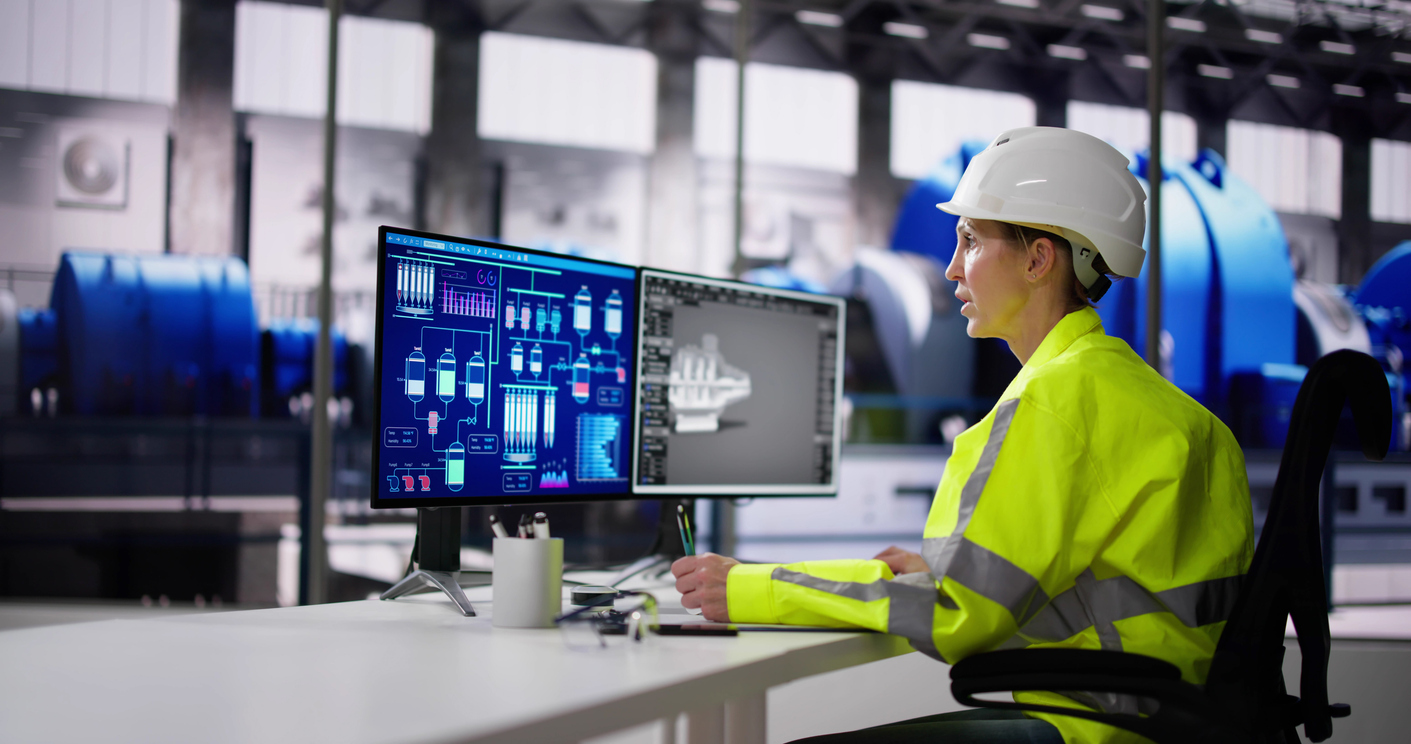Through the use of smartphones, headsets, and glasses, virtual reality and augmented reality (VR and AR) are entering mainstream culture and intersecting with our world whether at home, work, or on the go.
COVID-19 has only accelerated VR and AR’s rise. With physical limitations brought on by the pandemic, organizations are turning to VR and AR technologies on a larger scale.
The impressive numbers below make it clear that VR and AR are reshaping our reality and future.
- By 2030, 23 million jobs will be using VR and AR in one way or another. (PwC)
- By 2023 there will be an estimated 2.4 billion mobile AR users worldwide, a rise of 2.2 billion from the 200 million seen in 2015. (Statista)
- The global VR market size is projected to increase from less than $5 billion in 2021 to more than $12 billion by 2024. (Statista)
- VR and AR market for the retail industry will witness market growth at a rate of 68.5% between 2020 to 2027. (Data Bridge Market Research)
Before we explore VR and AR’s global impact, let’s clarify the difference between these two technologies.
How AR differs from VR
While VR and AR may seem similar – they are essentially different.
Augmented Reality (AR) keeps the user grounded in the real world but integrates computer-generated graphics, text, audio, and video to create a visual layer. This impacts the user’s interaction with reality and enhances his/her experience, creating a surreal world of fact and fantasy. Unlike VR, AR is not a fully immersive experience.
Virtual Reality (VR), on the other hand, creates a computer-simulated 3D experience with surround sound and video. VR enables users to interact with products, environments, and spaces in a non-physical reality using devices such as goggles, headsets, or gloves fitted with sensors. Users are fully immersed, yet the experience feels realistic.
So, how can businesses make the most of these two technologies?
VR and AR: Where are we now?
The Pokémon Go game brought AR to the masses practically overnight. Millions of people suddenly converted their smartphones into real-life Pokémon detectors. Now imagine yourself in a room capturing the monsters from the game through a device over your eyes. That’s VR.
However, gaming and entertainment are not the only industries using these two technologies. In just a few years, both VR and AR have created new opportunities in various industries.
Retail — AR already displays how furniture and other products will look in a buyer’s house. Take Ikea, for example. Its Place app, which allows users to see how Ikea products would look and fit in their homes, skyrocketed its sales. Also, Trillenium, a software company focusing on AR and VR products for the retail industry, partnered with HTEC to create a virtual environment that is close to a real-life shop. Users have their own avatars and can shop and interact with one another.
Healthcare — From using VR to operate on patients remotely to using AR to pinpoint tumors, these technologies are already playing a central role in patient care. For instance, Humeds, in collaboration with HTEC, developed a complete solution that records and analyzes ECGs at any time and automates the diagnosis of cardiac arrhythmias.
Education — Students at all levels can learn in and outside the classroom by using AR-aided educational materials. This makes online and distance learning much easier, especially in the midst of COVID-19 lockdowns.
Construction — 3D building modeling helps designers and architects visualize and work on a building together more easily and efficiently.
Arts, entertainment, and gaming — People can now attend virtual theatre plays and concerts without leaving their homes and event organizers can sell more tickets to more people. As we’ve previously mentioned, VR and AR have also been making waves in gaming. VR game-makers are constantly coming up with new ways to create even more immersive experiences for players.
Fashion and music — According to Forbes, consumers will be able to visualize and simulate garments to look and move like real clothing. VR has also had an impact on music. Using a 360-degree virtual experience, the band Kasabian recently let the audience virtually join them on stage during a virtual performance.
Military — VR and AR are breaking the boundaries on battlefields as well. The military can now create simulated environments where soldiers rehearse combat and rescue missions.
Industrial manufacturing — Wearable AR technology can now help workers organize inventory, manage machines, and get online advice through remote assistance no matter where they are.
Travel and tourism — Tourists can enjoy virtual tours of different destinations remotely, allowing them to evaluate certain cities and countries before making their decision about visiting.
What does the future hold?
VR and AR technologies will continue making strides across industries.
Based on Retail Customer Experience research, AR engagement has increased nearly 20% since the beginning of 2020, with conversion rates increasing by 90% for those consumers who engage with AR.
So where exactly is AR headed in the coming years?
AR Future Trends
1. Mobile AR and high growth with 5G
The increase in mobile devices like smartphones and smart glasses will bring everyone closer to the world of AR. Additionally, the rise of 5G, a complex and responsive network, combined with edge computing, will create an engine that can handle the data volume and transfer speeds needed for AR to thrive.
2. AR expands to the automotive industry
Heads-up displays (HUDs) are a newer application of AR technology. HUDs biggest value is that they offer drivers a clear view of the road, informing them of potential hazards. Also, the system can help drivers maintain focus on the road if they become distracted. Overall, AR’s biggest value here is driver safety.
AR can also be used for automotive marketing where drivers can view virtual cars in different colors.
3. AR glasses
AR headsets are superior to a smartphone camera for viewing simulated objects. Although wearables such as Microsoft HoloLens or Google Glass already exist, they are too bulky and expensive for the typical consumer. Once the industry develops socially acceptable and affordable glasses, the demand for AR will get a big boost.
This is why more tech players are entering the race. Apple and Facebook are developing smart glasses. When they reach the market, they will be the driver for use cases, such as allowing surgeons to view patients’ status in real-time and enabling factory workers to quickly view machine data.
4. AR in the classroom
The interactive nature of AR technology makes it an ideal solution for the classroom of the future. By scanning books and other educational materials, students can interact and engage with learning the way they want to. Plus, this helps students with disabilities overcome learning challenges, especially through interactive games and activities.
5. Remote assistance and virtual manuals
The COVID-19 pandemic helped bring remote expert assistance powered by AR to the mainstream. Let’s say you need someone to fix your Wi-Fi. Instead of calling an operator for assistance by phone, AR allows IT technicians to walk you through how to repair the issue using on-screen directions remotely.
So, what are the VR trends that will blur the borders between offline and virtual worlds?
VR Future Trends
1. Haptic feedback
Even though the use of sound and sight in VR creates a fully immersive experience, users still feel the “virtual” more than the “real.” Haptic feedback will change all that. Haptic feedback systems stimulate the sense of touch through a wearable device or gloves, so you will not only be able to hear and see things in virtual worlds, but also touch them.
2. VR in healthcare
With the world fighting against COVID-19, it’s no surprise that VR is emerging as a remedy in healthcare scenarios. Currently, VR is helping people suffering from anxiety and depression find a more relaxed state of mind. This can help patients overcome traumatic memories and better manage COVID-19-related stressors. Also, surgeons will be using VR to simulate operations, while paramedics will use it to rehearse for hazardous situations.
3. VR meets AI
What happens when the two most cutting-edge technologies join forces? Some examples include LG leveraging AI to reduce motion sickness among VR users; Facebook’s DeepFocus uses AI to make focus effects that improve users’ VR experience. On top of this, Chinese tech leaders are already working on integrating AI and VR into video games and various mobile solutions.
4. Virtual sports events
Pandemic regulations forced most professional sports leagues to postpone games. But VR is emerging as one of the ways to reach fans and create new revenue. For instance, although the 2020 NBA season had to be postponed due to COVID-19, the league offered VR/MR passes for fans to access the archives and enjoy games virtually through VR.
5. VR in the office
The pandemic has been making tectonic shifts in the way we work. Maintaining collaboration and team spirit have become real challenges. Luckily, many VR solutions are emerging to help.
Ericsson, the communication giant that gave their employees Oculus headsets while they were working from home, invented a concept called “Internet of Senses”, where devices feed information to us through all of our five senses. Ericsson predicts that by 2030 digital environments will appear much more real to all of our senses simultaneously.
The result: a “dematerialized office” – a completely interactive and collaborative environment we can access using a headset or similar devices.
It’s Time to Step into the VR/AR Future
Even though both VR and AR are entering the scene in a blaze of glory, they are still in their infancy. Yet at the same time, VR and AR have immense potential to help us reach new heights in all aspects of our work and personal lives.
Want to learn more about how HTEC’s technology expertise can transform your business? Explore our Technical Strategy and Software & HiTech capabilities.






